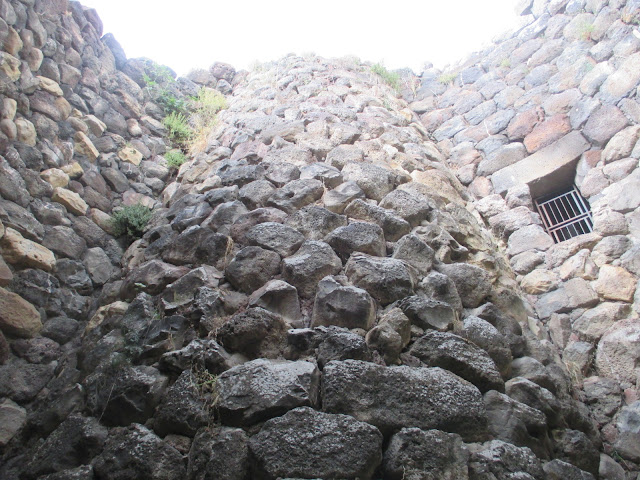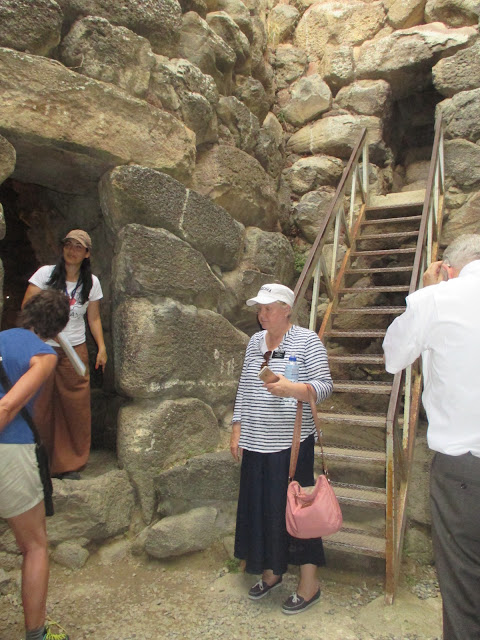The next specialized training is in Cagliari, Sardegna. Our flight left early in the morning and we had a few hours to spend before President did a scambi with some of the elders. Since we had a new senior couple with us who are our technology experts and are helping to get all the Ipads up and running, we showed them a Nuraghe since they are unique to Sardegna.
* * * * *
The Nuragic complex of Barumini rises in an area known as the Marmilla, located in south-central Sardinia (in the Province of Medio Campidano). The complex at Barumini is one of the 50 UNESCO World Heritage Sites that can be found in Italy.
According to UNESCO, this extremely valuable and important archaeological site is exemplary for being the most complete and best-preserved of the remains left by the Nuragic Civilization; at the same time, it also demonstrates the intelligent use of innovative materials and techniques by a prehistoric community.
The Village of Barumini - with its innumerable testimonies of a society that lasted for over a thousand years – indicate that this territory was inhabited over an immensely-long period of time: from the Bronze Age until the Third Century A.D.
This magnificent village, dominated by its magnificent central Nuraghe - or the type of ancient megalithic edifice typical of Sardinia – is also called “Su Nuraxi.” Hence, the name of the complex. “Su Nuraxi” is 15 meters (49 feet) tall, and is surrounded by a border wall composed of four lateral towers fused into the wall itself. The two floors inside the center tower remain intact. Here one also finds a courtyard in the shape of a half-moon, and a 20-meter (65 feet)-deep shaft or pit.
The nuraghi, in this case, were defensive towers in the shape of a truncated cone with interior rooms. They were realized with large dry stone walls.
The village sprung up around these main constructions, mostly huts in a circular plan, used specifically for domestic and ritual activities.
The fortified external wall (curtain wall) is extremely old and presupposes even Iron-Age settlements (Ninth to 13th Century A.D.). This curtain, furthermore, seems to be a reworking of a pre-existing defense wall that encompasses the most ancient part of the village, dating back to the Bronze Age (11th to 10th Century B.C.).
The wonderful particularity of the “Su Nuraxi” complex is that visitors can see not only the lookout tower, but they can walk through the ruins of an entire village from a thousand years ago, exploring the evidence that narrates the ancient habits and customs of this fascinating population.
Barumini is the part of Sardinia that is full of wild nature, grand stone monuments and gorgeous landscapes - a mysterious and evocative land that is far away from Sardinia’s crowded beaches.
And yet, we know very little of the ancient Nuragic Civilization, except that they were a people of shepherds and peasants that lived in small communities throughout Sardinia for eight centuries. They left indelible traces via these extraordinary edifices.
Approximately 7,000 nuraghi exist in all of Sardinia; nonetheless, the true use of these characteristic stone structures has never been proven with certainty. Most likely they were defensive fortresses – although some scholars are more inclined to say that they were palaces or temples.
In any case the nuraghe represented a center of social life for these tribes that also left constructions from the Megalithic period, such as their necropolises and places of worship.
* * * * *
 |
| The weather was beautiful when we started the tour, but it started to hail as we left. |























No comments:
Post a Comment